Paradoxical brain herniation, also known as sinking skin flap syndrome or syndrome of the trephined, is a rare and potentially fatal complication of decompressive craniectomy.
On this page:
Clinical presentation
The clinical presentation of paradoxical brain herniation may range from asymptomatic or mono symptomatic state to acute neurological deterioration.
Pathology
Atmospheric pressure exceeding intracranial pressure at the craniectomy results in displacement of the brain across various intracranial boundaries. This may result in subfalcine and/or transtentorial herniation. It is often triggered by acute imbalance caused by CSF drainage or lumbar puncture.
Radiographic features
Large craniectomy with marked concavity of the overlying skin flap, with findings of mass effect such as effacement of the superficial sulci and buckling of the grey-white matter. There may be paradoxical midline shift away from (contralateral to) the craniectomy.
Treatment and prognosis
Paradoxical brain herniation is a neurosurgical emergency and necessitates immediate intervention to prevent permanent damage:
place patient in Trendelenburg position to increase intracranial pressure, with aim of correcting the improper balance between atmospheric and intracranial pressure
correction of the underlying cause e.g. manipulating CSF drains, lumbar puncture sites
consider cranioplasty with replacement of the cranial flap


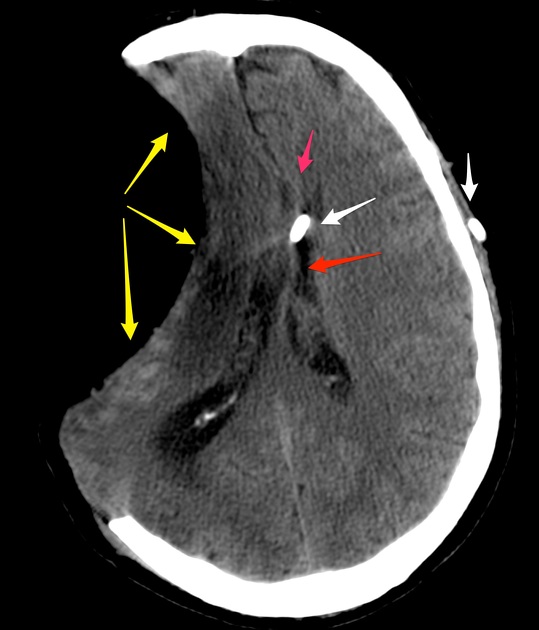
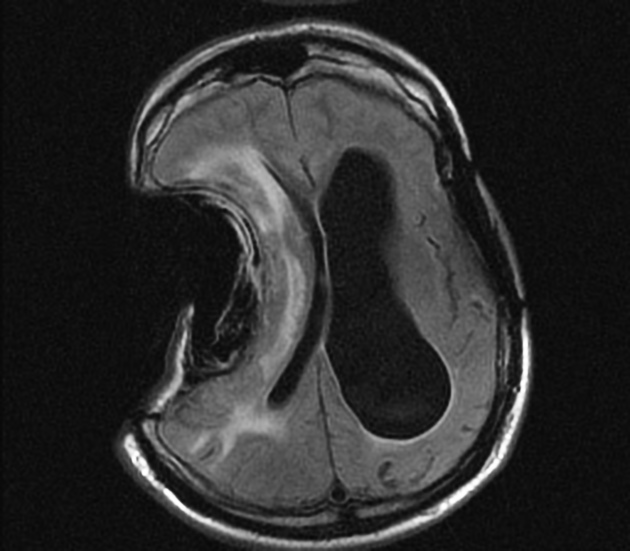
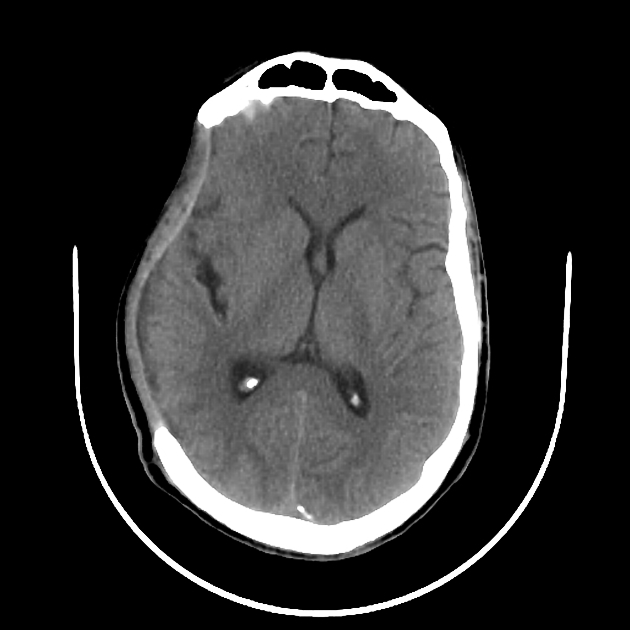
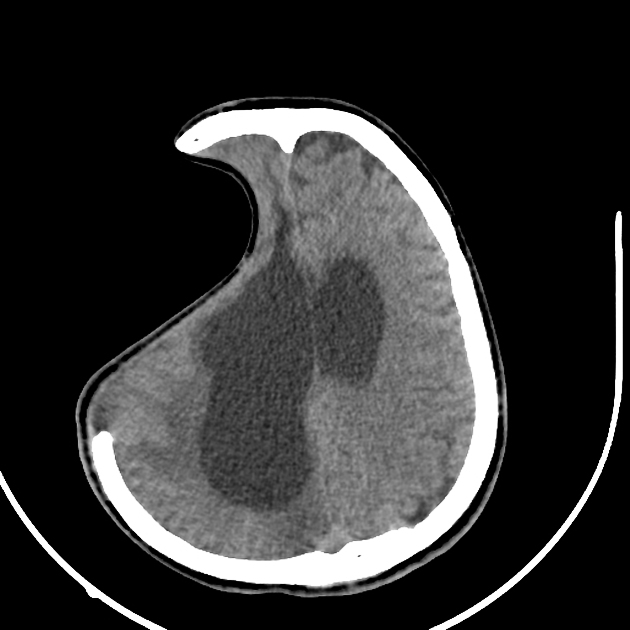
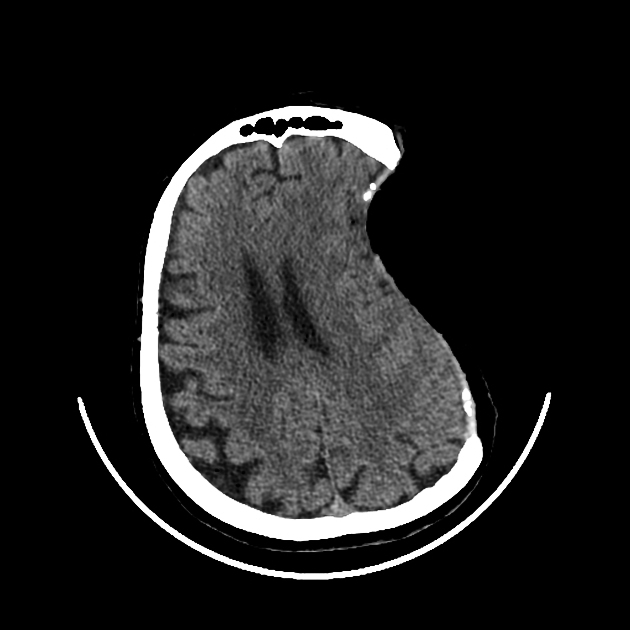


 Unable to process the form. Check for errors and try again.
Unable to process the form. Check for errors and try again.